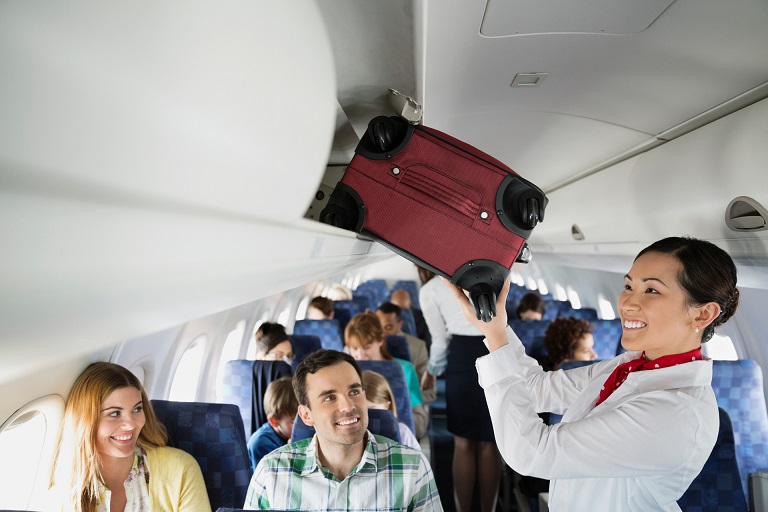Air travel is one of the safest forms of transportation worldwide; but, accidents do happen, and passengers can become injured during flights – often, serious or fatal injuries can result.
When passengers are injured during flight operations, it is crucial that airlines are held accountable. Airlines owe a duty of care to their passengers and should take reasonable steps to prevent injuries; should an airline do this; they could be held liable for their injuries.
This review examines various areas of discussion surrounding passenger safety and ways to hold airlines responsible for any injuries sustained during flight operations.
By reviewing the legal framework, duty of care obligations, safety measures, and training protocols, reporting and investigation processes, compensation & liability processes, regulatory oversight processes, industry best practices, and international cooperation, it’s possible to create a safer air travel environment while upholding accountability from airlines.
Legal Framework
Legal requirements that regulate passenger safety in aviation vary between nations; however, some guiding principles have become universally accepted across industries and jurisdictions.
These include:
Airlines owe a duty of care to their passengers to ensure their safety during flight operations, including taking all reasonable measures to prevent injuries to passengers.
Passengers injured while flying are entitled to compensation if an airline can be proven responsible.
National governments typically pass laws and regulations pertaining to passenger safety in aviation. These may require airlines to implement certain safeguards for crew training and aircraft maintenance, among others.
Duty of Care
Duty of care is a legal concept that establishes an obligation between two individuals or parties that involves them taking reasonable measures to prevent harm.
With regard to aviation, this means airlines owe their passengers all reasonable steps necessary to ensure their safety during flight operations.
Airlines should meet a standard of care that fits their circumstances; for instance, precaution should be taken in dangerous conditions, such as turbulence than in less dangerous ones.
Safety Measures and Training
Airlines employ various safety measures and training protocols in order to prevent injuries during flight operations, such as:
Crew Member Safety Training
Crew members serve as the front line against injuries during flight operations. Their role includes making passengers aware of safety procedures and maintaining an aircraft in good condition. Crew members receive extensive training on safety procedures, such as how to respond in case of in-flight emergencies such as turbulence, fires, and medical situations.
Maintenance of Aircraft
Aircraft maintenance plays a key role in preventing injuries during flight operations. Airlines adhere to stringent maintenance procedures to ensure their aircraft remain safe for flight, including regular inspections of its structure, systems and components.
Utilize Safety Equipment
Utilizing safety equipment like seatbelts and oxygen masks can help minimize injuries during flight operations. Seat belts serve to restrain passengers during periods of turbulence or sudden movements within an aircraft, protecting passengers from harm during those unexpectedly sharp maneuvers that often accompany flight operations.
Oxygen masks provide oxygen in the event of cabin pressure loss. Airlines should require passengers to wear seatbelts during takeoff and landing and provide oxygen masks as an additional safety measure in case there is any loss in cabin pressure.
Implementation of Safety Policies
Airlines implement a range of safety policies designed to minimize injuries during flight operations. This may include procedures for baggage handling and boarding as well as emergency responses in flight.
Policies such as this aim to educate passengers about the risks involved with air travel and take steps to reduce them. The effectiveness of measures taken to ensure passenger safety varies, though evidence shows they may reduce injury risks.
In-Flight Incidents
There are various in-flight incidents which could result in injuries for passengers, including:
Turbulence
Turbulence is an all too common occurrence during air travel, and it can be the source of serious passenger injuries. Turbulence results from changes in air pressure and temperature that cause aircraft to shake violently or rock violently, causing passengers to be thrown around in the cabin resulting in head, spinal, or broken bone injuries.
Faulty Equipment
Defective equipment can also play an integral part in passenger injuries. This includes items like seatbelts, oxygen masks, and emergency exits, which if functioning improperly, prevent passengers from protecting themselves in case of an aviation accident or emergency situation.
Cabin Crew Negligence
Negligence on the part of cabin crew can also result in passenger injuries. Cabin crew members have a responsibility to ensure passengers understand safety procedures and adhere to them properly, failing to do so could result in injuries during an accident or emergency situation.
Medical Emergencies
Emergencies such as heart attacks, strokes, and seizures are very real threats in-flight, leading to passenger injuries that require emergency treatment.
When they do arise, it’s essential that cabin crew members can offer immediate assistance; failing to do so could result in serious injuries or even death.
Acts of Terrorism
Terrorism acts can also take place on planes, leading to passenger injuries through acts such as hijackings, bombings or shooting sprees.
When this occurs, it is essential for passengers to follow instructions given by terrorists as best as they can so as to reduce injuries as soon as possible. This will reduce risks.
Airline companies’ roles in preventing such incidents and responding appropriately when they occur depend on the circumstances; however, in general, they should take all reasonable steps to prevent injuries and help any passengers who may have been hurt.
Reporting and Investigation
Injuries sustained during flight operations must be reported immediately to the appropriate authorities, such as an airline, aviation authority, or government department.
Reporting typically includes providing details about the date, time, location, and injuries sustained as part of this process.
Investigation procedures are carried out by appropriate authorities to ascertain the cause and identify any potential safety risks related to an incident, which may involve interviewing passengers, crew members, and witnesses; additionally, a review of maintenance records on aircraft may also be undertaken as part of this process.
Compensation and Liability
Passengers injured during flight operations may be entitled to compensation. The exact amount may depend on several factors, including the severity of injuries sustained, extent of losses experienced, and airline liability.
The law dictates the liability of airlines for injuries sustained during flight operations, with generally negligent acts considered as being their liability. Negligence refers to failing to take reasonable precautions to prevent harm being caused to someone.
Regulatory Oversight
Aviation authorities and government agencies play an essential role in assuring passenger safety and holding airlines responsible for injuries sustained on board their flights.
These bodies typically possess the authority to enact laws and regulations, investigate incidents, and impose sanctions against airlines that violate them.
Evidence exists to support regulatory oversight’s efficacy in protecting passenger safety, but results vary widely between instances.
Industry Best Practices
The aviation industry has established several industry best practices and standards related to passenger safety during flight operations.
These best practices draw upon experience gained by airlines and regulatory bodies and offer guidance for improving outcomes of passenger safety measures.
Sharing information and fostering collaboration among airlines are vital in improving safety outcomes. By exchanging experiences and collaborating, airlines can learn from one another’s experiences while also working collaboratively to develop and implement safety improvements.
Final Thoughts
Air travel is one of the safest modes of transport worldwide, yet accidents do happen and passengers can become injured, sometimes to life-threatening extent or even lead to fatalities.
Airlines have a duty of care to their passengers, and must take reasonable steps to prevent injuries. If an airline fails to meet this duty of care, they may be liable for a passenger’s injuries.








Add Comment